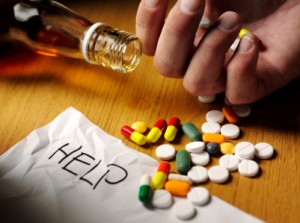One of the areas of life that changes as people mature and begin to notice the number of years they’ve lived is growing larger, is an increased concern about physical health and the potential decline of their abilities. For some people there is an additional cause for concern because of earlier life habits which may have accelerated the aging process. One of those habits may have been the excessive use of addicting chemicals.
 In reviewing how the body is created the cells are covered with fatty tissue called the cell membrane. Since all of the drugs that are used in an addictive way are fat soluble, with the exception of cocaine, they have ready access across the membrane and can interfere with the cells functioning. Cocaine is water soluble and uses a different mechanism for opening a channel to gain access.
In reviewing how the body is created the cells are covered with fatty tissue called the cell membrane. Since all of the drugs that are used in an addictive way are fat soluble, with the exception of cocaine, they have ready access across the membrane and can interfere with the cells functioning. Cocaine is water soluble and uses a different mechanism for opening a channel to gain access.
All cells in the body are really little factories with specific jobs to do, usually by making a substance the body needs. When a foreign substance enters the cell it prevents the normal functioning, and in some cases, causes the cessation of the production of the internal substance. One of the primary places where this occurs is in the nervous system.
The body makes about one hundred chemicals which are called neurotransmitters. The name simply means these are chemicals that transmit a message from one nerve cell to another one. Any task we ask the body to perform, like combing our hair or taking a drink of water, is able to be accomplished because the nerve cells, called neurons, send messages along a chain instructing muscles in what they should do. There are other tasks like enabling us to think and make a decision, maintaining a cheery disposition, going to sleep easily and resting well, and handling the stress of a difficult situation.
All addicting substances mimic one or more of the neurotransmitters and when the substance is used a cascade of events begins to happen in the body. One of the primary events is that the addicting chemical sends a message to the body that it doesn’t need to make that neurotransmitter any more so the user becomes ‘dependent’ on the outside chemical because the body no longer makes the internal one. When someone discontinues their use of the outside chemical the body doesn’t have either chemical and it complains. We call this withdrawal, which can be very uncomfortable, and in some cases life threatening.
An easy place to begin to deal with addictions is by paying attention to what we eat every day. The body tries to repair itself if the proper ingredients are available in the bloodstream. We can’t promise a person that their brain or body will be as perfect as before they began to use, however, in many cases there is considerable improvement and sometimes the user even feels better than before they began to use. Recovery is never simply stopping the use of the substance, it is regaining quality of life and that means restoring brain function as a basis. There is hope!
Neurotransmitters are all made from the food we eat and so it follows that when there is a lack in nutrition there is a corresponding lack in the body’s ability to stabilize its functions, as well as lacking the ability to repair body cells and organs. My clinical experience has confirmed that when daily nutrition is addressed that significant improvement happens both in recovery from addictive chemicals and in general body health and maintenance. I have tried to make that information available in my recent book, ‘The Body’s Role in Addictions’



